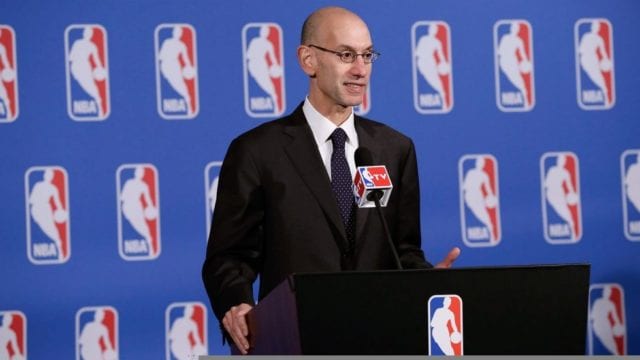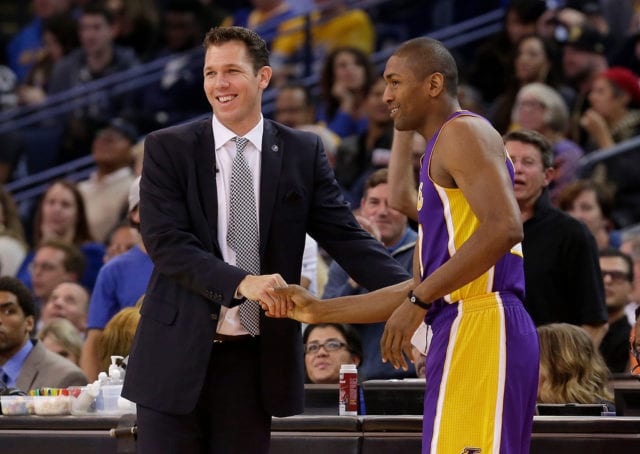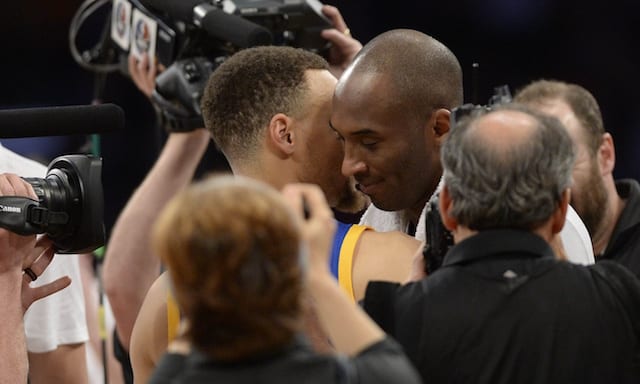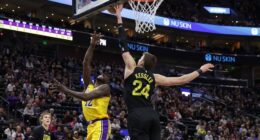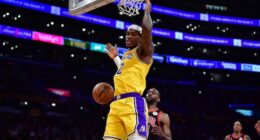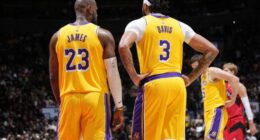The NBA and NBPA (Player’s Association) have announced that they have tentatively agreed on a new Collective Bargaining Agreement, which would replace the current agreement this summer. Assuming the deal is ratified by both the players and the owners, the basketball world can rejoice, because this means that there will not be a lockout like there was in 2011.
However, while a new CBA is great for basketball fans, it isn’t always good for the Los Angeles Lakers. After all, the CBA that was eventually approved in 2011 took shots directly at the league’s most popular franchise by instituting a more punitive luxury tax, which was designed to eliminate their ability to outspend opponents. At the same time, it increased revenue sharing, which is where the Lakers and other profitable clubs put money into a pot that gets distributed to less financially successful organizations.
— Get 15% off everything in the Lakers Nation Store right now by using the promo code ‘Lakers’ —
In other words, not only did the CBA limit the Lakers’ ability to rebuild their roster, but it also required that they give even more money to opponents so that they could build teams to beat them.
One could even speculate that the 2011 CBA played a role in the notorious unraveling of the Chris Paul trade by then-Commissioner David Stern. With the ink still wet on a deal that was supposed to prevent the Lakers from re-loading, it wasn’t a good look for Los Angeles to still find a way to land another superstar, so the trade met a troubling end via basketball reasons.
Of course, that was then, and this is now. Times have changed, and the Lakers find themselves in a very different position than the one they were in back in 2011. Let’s take a look at some of the rumored parts of the new CBA and how they potentially impact the Lakers.
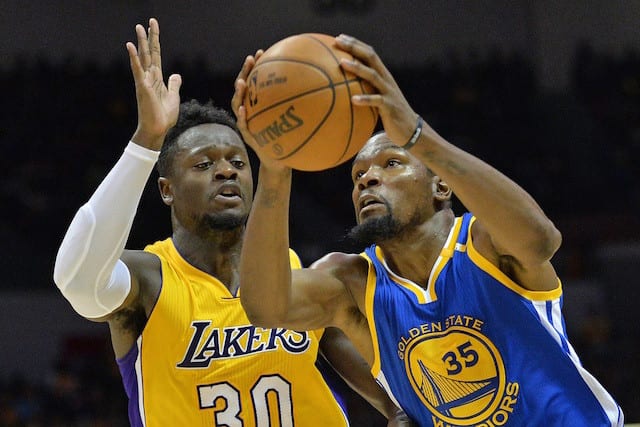
Increases In Player Contracts/Length for Stars
It appears as though the veteran minimum, mid-level exception, bi-annual exception, rookie-scale contracts, etc will see a boost across the board. Tim Bontemps of the Washington Post is reporting that it will be a 45 percent increase, which is not good for a team like the Lakers, who wanted to maintain enough cap space to go after a max-level free agent next summer. Los Angeles currently has just over $68 million on the books for next season, but that’s only if Nick Young declines his player option and the team decides to not pick up their options on Tarik Black or Marcelo Huertas. If all options are exercised, the Lakers would have over $82 million in salaries, with the cap sitting at $102 million.
A max deal under the new CBA, which is what it would take to land a star in free agency, would start at $36 million for a player with 10 or more years of service, like Kevin Durant or Chris Paul, and $31 million for a player with 7-9 years. Incumbent teams will also, in some situations, be able to offer a fifth or even sixth year on the deal, and that offer can’t be made to a player who has just been traded for.
What this boils down to is that the NBA is trying to prevent what Kevin Durant and the Golden State Warriors did this summer by making it more difficult for stars to leave their teams. The Lakers reloading was one of the concerns in 2011 and the league stopped them, now the big bad is super teams like the Warriors, so we get this rule designed to limit the incentive for stars to jump teams. For a club like the Lakers who don’t currently have a star to call their own, that’s not good.
While it still isn’t impossible, the slim chance that the Lakers land a marquee player this summer is suddenly looking nearly nonexistent.
Moreover, the increases across the board to the midlevel exceptions, which are now tied to a percentage of the cap rather than being static, means the Lakers could potentially have to pay more for whoever they are able to sign since a rising tide raises all ships. Rookie deals will also now chew up more cap space in the event that the basketball gods show mercy in the draft lottery and provide a top-three pick to Los Angeles.
On the flip side, player contracts signed before the new CBA, including rookie deals like D’Angelo Russell, Julius Randle, and Brandon Ingram have, as well as value contracts like Lou Williams’ $7 million per year, now look that much better.
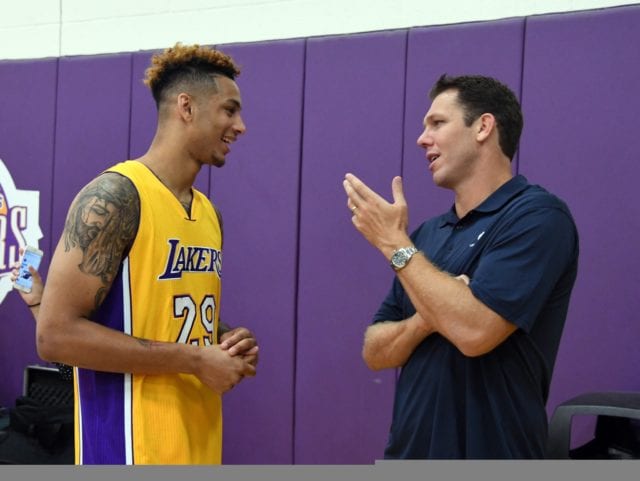
Two-Way Contracts
Now we’re talking. This reported aspect of the new CBA should have Lakers fans smiling from ear to ear. Current league rules set roster maximums at 15 players and allows for any player with under three years of experience to be sent down to the D-League at any time (players with four years or more CAN go to the D-League, but the team has to have the players’ permission). However, while said player is in the D-League they will still occupy a spot on the parent club’s roster.
For some teams, using a valuable roster spot on a player who is going to spend most of their time elsewhere isn’t appealing, so they cut the player from their roster and send them to D-League. They can be called up at any time, but the parent club must make room on their roster by cutting someone else and they also run the risk that another NBA club may sign the player away.
In other words, NBA teams are left making the decision to either develop talent for the future or field a competitive roster in the here and now, with limited ability to do both.
For the player, being cut from the NBA and going to the D-League isn’t ideal because D-League salaries are a pittance compared to what a player makes in the NBA (the top D-League tier is $25,500). Some teams get around this by offering guaranteed money on their training camp deals, which would essentially supplement their D-League salary once the player was cut from the parent club, but it was an awkward situation, especially when players can often make more money overseas.
To fix the situation, the NBA is reportedly creating two-way contracts. A player on this type of contract could float between the club’s D-League affiliate and would pay them substantially more than the standard D-League contract (some estimates suggest about $75,000-$100,000). This will also lead to the creation of additional roster spots to accommodate two-way players.
To put this into real-world terms, let’s say the two-way rule was in place last season, and that it came with two additional roster spots. The Lakers really liked Notre Dame big man Zach Auguste, but watched him go overseas after they cut him rather than join the D-Fenders partly due to the money he could make.
Instead of losing Auguste, by offering him a two-way deal, the Lakers theoretically could have kept him in their system by offering more money while still allowing him to develop in the D-League, AND would not need to burn a valuable spot on their 15-man roster on him or worry about another club claiming him.
The same could have been done with Ivica Zubac, who is spending considerable time in the D-Leaue developing anyway. This would have likely eliminated the need to waive swingman Anthony Brown because the team would have an extra roster spot to work with.
For a club like the Lakers, who have been successful at identifying talent late in the draft, the two-way contract rule gives them a much better shot at hanging on to the young players they have unearthed. This rule could also increase the trade value of second-round picks, and the Lakers just added two of them this summer in the Jose Calderon trade.
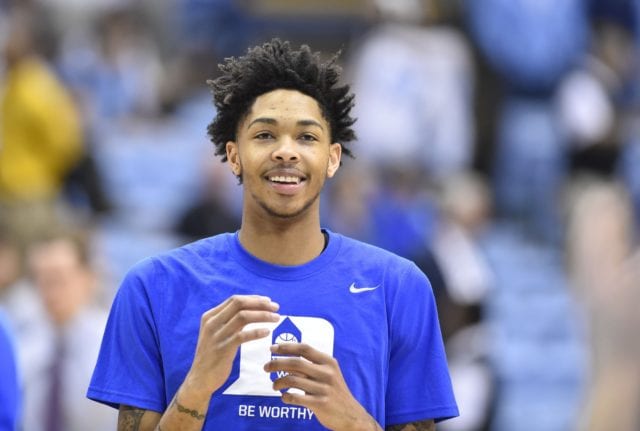
One-and-Done Stays In Place
The Lakers may be on a losing streak currently, but given their early season success, it appears likely that they will have to surrender their 2017 Draft Pick to the Philadelphia 76ers, which is a lingering consequence of the ill-fated Steve Nash trade. However, losing the 2017 pick means the team, by NBA rules, will keep it’s 2018 selection.
Had the one-and-done rule for college players been changed to two-and-done, as the league is rumored to prefer, then next year’s freshman class would not have been eligible for the NBA Draft, greatly shrinking the talent pool that the Lakers would have had to choose from.
The merits of one-and-done vs two-and-done are certainly debatable, but assuming the Lakers do lose their 2017 pick, this is the preferred outcome.
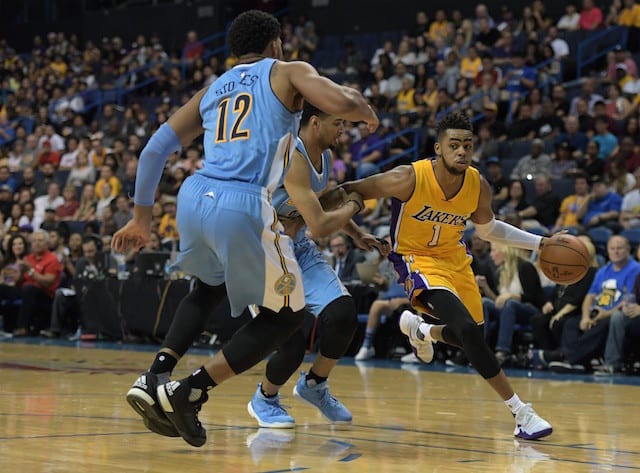
Shorter Preseason
This isn’t just good for the Lakers, this is good for the entire league. The NBA schedule is a grind, and by limiting the preseason to six games it will allow the season to kick off a little over a week earlier than usual. That will allow the schedule makers to stretch things out a bit and further limit back-to-back games, which are almost universally despised (and often see the second night, if not the first as well, on the road) and have been shown to create a higher risk of injury.
Lower injury risk and a higher quality of play is definitely worth the sacrifice of a few meaningless preseason games.
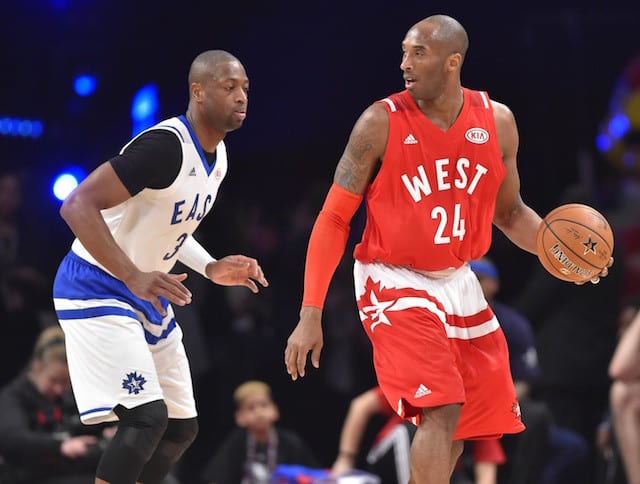
Over-36 Rule Becomes Over-38 Rule
There was a rule in place that, while somewhat complicated, essentially made it non-sensible for teams to offer long-term deals to players who would be over 36 years old during the deal. The rule has now been pushed to 38 years old, which isn’t a surprise considering the fact that Chris Paul and LeBron James are President and Vice President of the Player’s Union, and both could potentially have not received full five-year deals on their next contracts due to that rule.
The downside is that many players in their 30s will now be able to get contracts that extend even further past their prime, and at some point, a club desperate for talent will bite the bullet and give it to them.
The Lakers were skewered for the four-year deals given to now 30-year-old Timofey Mozgov and 31-year-old Luol Deng, and have shown a willingness to sign older players in the past. We can’t forget the massive deal they gave the twilight years version of Kobe Bryant. Who is to say they won’t be tempted to make a long-term offer in order to land an aging star like Dwyane Wade and make a splash next summer?
That’s where the new over-38 rule could get some teams into trouble, and it will be up to the Lakers to make wise choices on who to give lengthy deals to.
All salary info via Eric Pincus of Basketball Insiders and CBA info obtained via David Aldridge of NBA.com except where otherwise noted.
